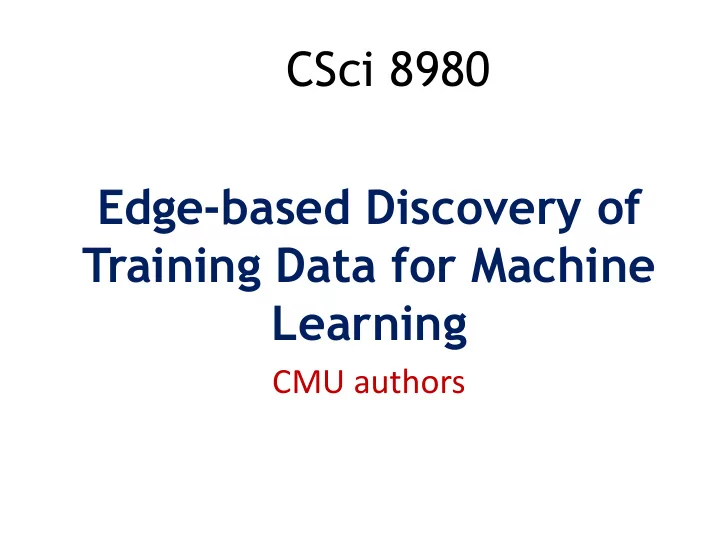

CSci 8980 Edge-based Discovery of Training Data for Machine Learning CMU authors
Deep Learning Recipe • Collect a large amount of data and label it • Select a model and train a DNN • Deploy the DNN for inference
Labelled Data • Some data are easy to label … • Some require domain expertise
Building a test set is hard • Non-expert crowd- sourcing won’t work • Data may have privacy or other restrictions • Need 10 x or more training samples for DNN • Expert may need to shift through 10 y , y>>x samples; experts are $$ • Goal: make expert’s life easier – Optimize “human -in-the- loop” time
Eureka Approach • Focus on image labelling • Assume images are widely distributed and come from different sources – Even live streams, e.g. IoT – Can turn on/off data sources • Support the expert in the labelling process – Early discard => filter or classifier that says “NO WAY” – Iterative discovery workflow – Edge computing
Stolen slides begin now cloudlet = edge node near data source
Edge node (cloudlets) run Filters
=> More data … Better classifiers … Control false positives!
Matching • Optimize user time/attention • Deliver data to expert at a rate they can handle – Human labelling time >> Single filter time • Too fast – overwhelmed with data – Fewer cloudlets (less data) or deeper filter • Too slow – kept waiting – More cloudlets (Watch false positives)
Discussion • Creating data labels is time-consuming • Discussion – Assumptions: data can come from anywhere – Expert data: is this true?
Recommend
More recommend